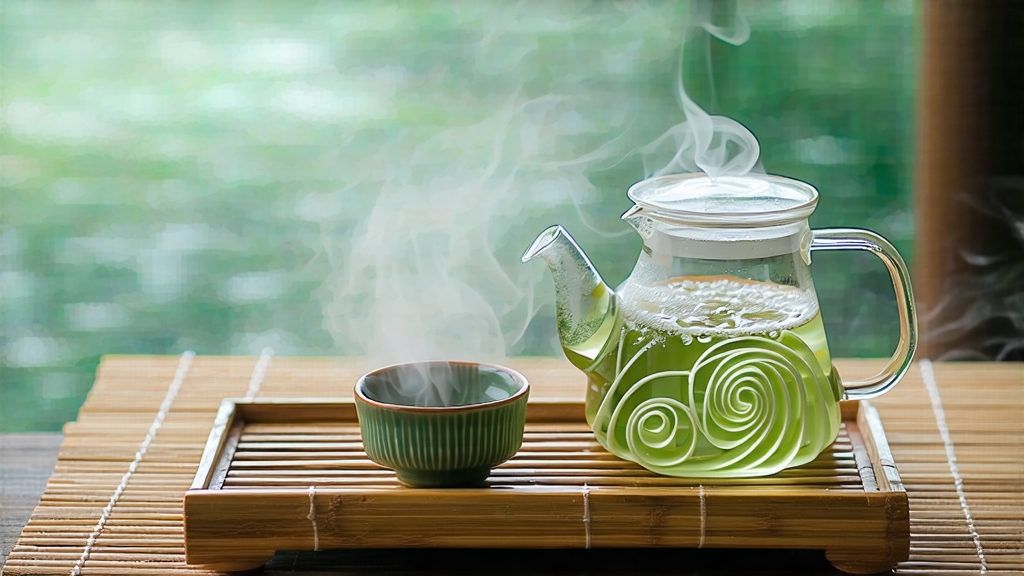
Hidden in the soft haze that rises off Taihu Lake each March, the tiny fishing island of Dongting Shan awakens to the quiet clack of bamboo baskets and the low murmur of tea pickers. Here, in a micro-climate chilled by lake water and warmed by early sun, grows Bi Luo Chun—literally “Green Snail Spring”—a tea so delicate that one kilogram needs sixty thousand buds and a day’s work of six skilled pluckers. To international drinkers who know Dragon Well or Gunpowder, Bi Luo Chun remains a lesser-known emerald, yet connoisseurs rank it among China’s top ten classical greens for its perfume, its velvet body, and the romance that curls inside every snail-shaped leaf.
The first written record appears in 1699, when the Kangxi Emperor visited the lake and was served a tea so fragrant that he renamed it from the rustic “Xia Sha Ren Xiang” (“Scary Fragrance”) to the more elegant “Bi Luo Chun.” Court chroniclers describe ladies-of-honor warming cups over charcoal braziers while lake breezes carried the scent of apricot blossom into the pavilion; the same breeze still dictates the leaf’s chemistry today. In the late nineteenth century the tea sailed down the Grand Canal to Shanghai’s foreign concessions, where British tea taster A. W. S. Cross awarded it 98 points in 1892—higher than any Darjeeling of that season—yet Bi Luo Chun never became an export staple because its thin, spiral bud breaks so easily in trans-oceanic crates. Thus the best lots stayed within Jiangsu province, circulating like edible jade among scholars, poets and merchants who traded it for ink stones and calligraphy.
Botanically the tea belongs to a small-leaf cultivar called “Dongting Qunti,” a landrace that evolved on the island’s rocky terraces rather than being transplanted from Yunnan’s ancient forests. The bushes bud early—often in late February—thanks to the lake’s thermal mass, and they accumulate more linalool and geraniol than inland shrubs, molecules that later translate into orchid and honey notes. Growers recognize three micro-origin grades: Ming-Qing Peak (above 150 m, shaded by loquat and bayberry trees), Mid-Slope Garden (80–150 m, mixed citrus and tea), and Shore Terrace (below 80 m, where morning fog is thickest). Each zone picks on a different lunar day, so a skilled blender can orchestrate a spectrum of aromatics from a single mountain.
Plucking follows the “three excellences” rule: buds must be “just open, still downy, and of one heart with two leaves.” Pickers pinch, never pull, rotating the wrist so the tender shoot drops silently into the willow basket; any audible snap means bruised cells that will oxidize and dull the liquor. Within thirty minutes the harvest descends the slope in wicker panniers, weighed on the spot—an incentive system that rewards speed yet punifies carelessness with lower pay. At the cottage gate the leaves are spread on bamboo sieves under a ceiling fan set to the lowest speed; the goal is to evaporate surface moisture without wilting the fine hairs that give Bi Luo Chun its silvery sheen.
The most iconic step is hand pan-firing in a wok barely larger than a dinner plate. The master—usually a woman in her fifties whose forearms are mapped with old burn scars—heats the iron to 180 °C, then switches off the burner. A handful of buds, no more than 250 g, is tossed in; she presses, rolls, and shakes for precisely 3.5 minutes, relying on muscle memory to judge when the leaf temperature drops to 60 °C. At that instant she “kills the green,” deactivating polyphenol oxidase while locking in chlorophyll. Immediately the heat is rekindled to 120 °C for the rolling-spiral phase: fingers form a loose cage, coaxing each bud to curl like a sleeping snail. Locals say the sound should resemble “rain on a tin roof”—a gentle patter that signals even dehydration. When the leaves feel velvety and bounce back after a pinch, they are poured onto a hemp cloth and left to rest for twenty minutes, allowing residual heat to travel outward and prevent “heart burn,” an off-flavor reminiscent of boiled asparagus.
A second light firing at